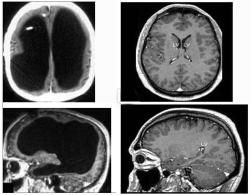Tiny wasp brains display amazing adaptability
 Washington, Oct 15 : A tropical wasp's tiny brain, about as big as two sand grains, seems to pack in amazing adaptability and computing power, say scientists.
Washington, Oct 15 : A tropical wasp's tiny brain, about as big as two sand grains, seems to pack in amazing adaptability and computing power, say scientists.
Researchers have found that the brain architecture of these wasps undergoes dramatic changes as they cycle through a sequence of specialised jobs during their lives.
The scientists had previously discovered that parts of the brains of these insects enlarged as they engaged in more complex tasks.
Researchers found the biggest changes in brain neuron (nerve cell) architecture occurred when the wasps shifted from working on the nest exterior to foraging.
The new work describes how this happens as dendrites, or extensions from individual neurons, reach out to receive information from other brain cells and form a dense network of connections. They help wasps integrate information from visual, olfactory and touch sensory systems.
"I was astounded when we found that some of the individual neurons had dendrites that were seven to eight mm long in a brain that is roughly the size of two grains of sand. That's packing a huge amount of computing power in a small amount of space," said Sean O'Donnell.
O'Donnell, study co-author, from the University of Washington (UW), said "these animals live in a complicated world and individuals face challenges that require a lot of brain power.
"The architecture of the wasp brain is different from that of humans. They evolved independently from us, but some of the problems they face are similar to ours because both of us are social animals."
This led researchers to ask whether there are similarities or differences in brain plasticity (adaptability) for social animals.
Adult wasps perform different jobs for the colony in a developmental sequence that is accompanied by behavioural changes as they age.
They begin by performing tasks in the dim interior of the nest before moving outside where they work on the exterior of the nest.
Finally, they leave the nest to forage for food and building materials for the colony and then find their way back to the nest. Each job change is accompanied by an increase in the complexity of the tasks, O'Donnell said.(IANS)